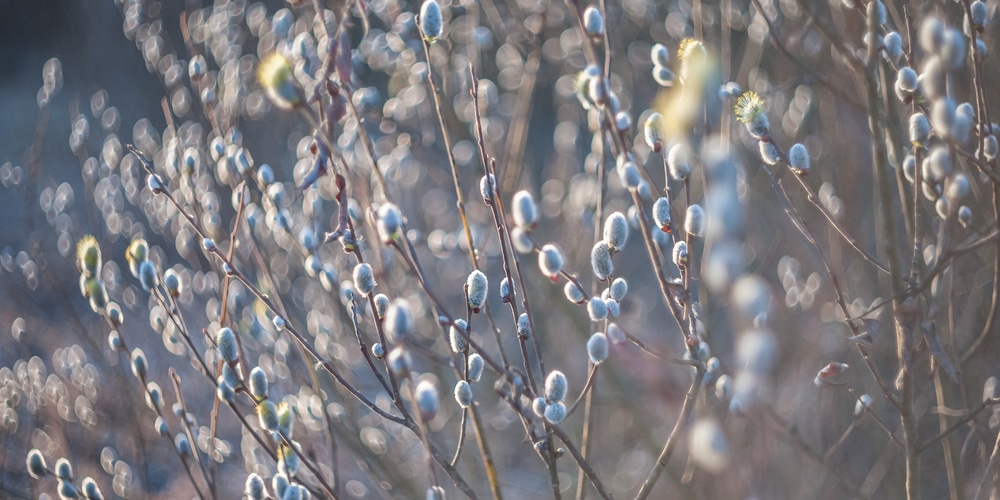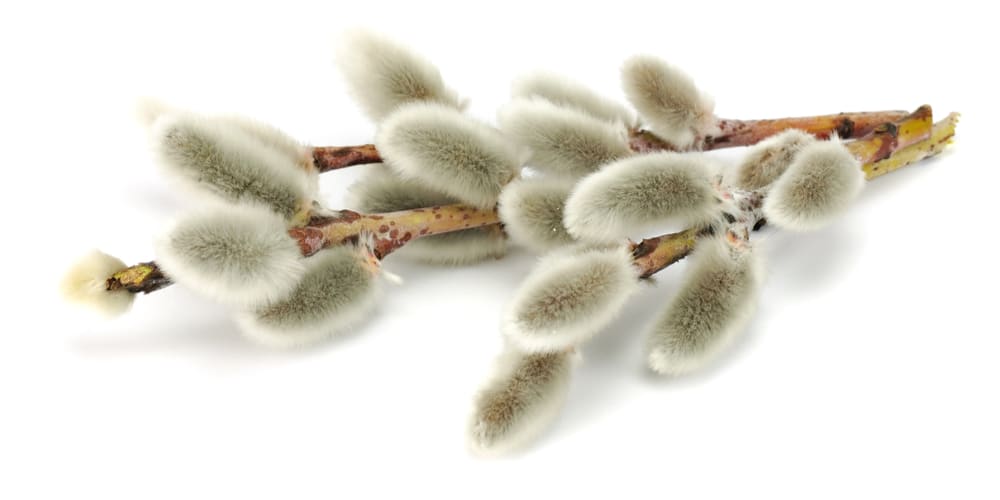Ever seen a tree with furry, silky buds that looks like a cat’s paw? These beautiful trees are called Pussy Willows, which get their name from the buds that look like a cat’s paw. The plant is found in North America, Europe, and Asia. T
he most common type of Pussy Willow is the Salix discolor. But other types include the Salix caprea, Salix cinerea, and the Salix fragilis.
When Pussy Willows Bloom?

In general, they bloom in the spring and early summer, specifically from early March to late June, and are often one of the first trees to flower. They are deciduous plants that lose their leaves in the fall and winter.
However, there are some instances that these plants may bloom even during the snow! As soon as the ground thaws and the temperatures start to rise, they’ll bloom profusely. In fact, in milder climates, these beautiful plants can bloom as early as January.
Pussy Willows: Brief Plant Description
Pussy Willows are among the first plants to bloom in the springtime. They are often seen along roadsides and fields, their fuzzy buds being a welcome sign of warmer weather. The plant gets its name from the furry, silky buds that look like a cat’s paw.
Despite the flowers being relatively small, they are very fragrant and attract bees, flies, and other insects. Paired with long, slender leaves that are green on top and white or silvery on the underside, its fuzzy buds make the Pussy Willow a unique and beautiful plant. During the fall, the leaves turn a yellow or golden color before they drop off.
How Do Pussy Willows Bloom?
In early spring, the long, gray branches of the pussy willow tree begin to show signs of life. Tiny green buds appear, and as the days grow longer and warmer, these buds gradually swell and turn into soft, velvety blossoms.
The flowers are actually small and inconspicuous, but they are surrounded by large, showy bracts that give the plant its characteristic furry appearance.
As the season progresses, the female flowers develop into tiny seedpods, while the male flowers turn into fluffy clusters of pollen. Later in the season, the willow’s leaves will emerge, and the plant will be covered in a sea of green.
By summer’s end, the pussy willows will have lost their furry coats, and their branches will be laden with ripe seedpods, waiting to release their seeds on the wind.
After the seeds ripen, they are dispersed by the wind or water. Thus begins the cycle anew, ensuring that the pussy willow tree will continue to bloom.
What Makes Pussy Willows Unique?
Aside from being dioecious, they’re relatively easy to care for, being one of the first trees to leaf out and flower in the spring.
They can be used as hedges, screens, or windbreaks and are often planted along roadsides and fields. The plant is also a popular choice for floral arrangements and as cuttings for bouquets.
Their fuzzy buds and silky flowers have a long history of symbolism and myth associated with them. Many cultures see them as a sign of hope and new beginnings. It is a plant that is loved by many because of its unique appearance and the hope they symbolize.
In both the US and Europe, pussy willow branches are often used as part of Easter celebrations. As a religious symbol for the holiday, they represent the palm branches that were used to welcome Jesus Christ into Jerusalem. They’re often used as substitutes for palm fronds in Palm Sunday services.
They are a beautiful addition to any garden. Their unique buds make them stand out among other trees and shrubs. And their easy-care nature makes them an excellent choice for beginner gardeners. So if you’re looking for a beautiful and low-maintenance plant, consider adding a pussy willow to your garden.
When Do Pussy Willows Bloom: Final Thoughts
When pussy willows bloom during the springtime, it’s a sure sign that warmer weather is on the way. Welcoming these fuzzy buds into your garden is a great way to add some color and life after a long and dreary winter.
With their unique appearance and rich symbolism, having these plants in your backyard makes for a beautiful and special space.
Related Article: Are Pussy Willow Toxic to Cats?
